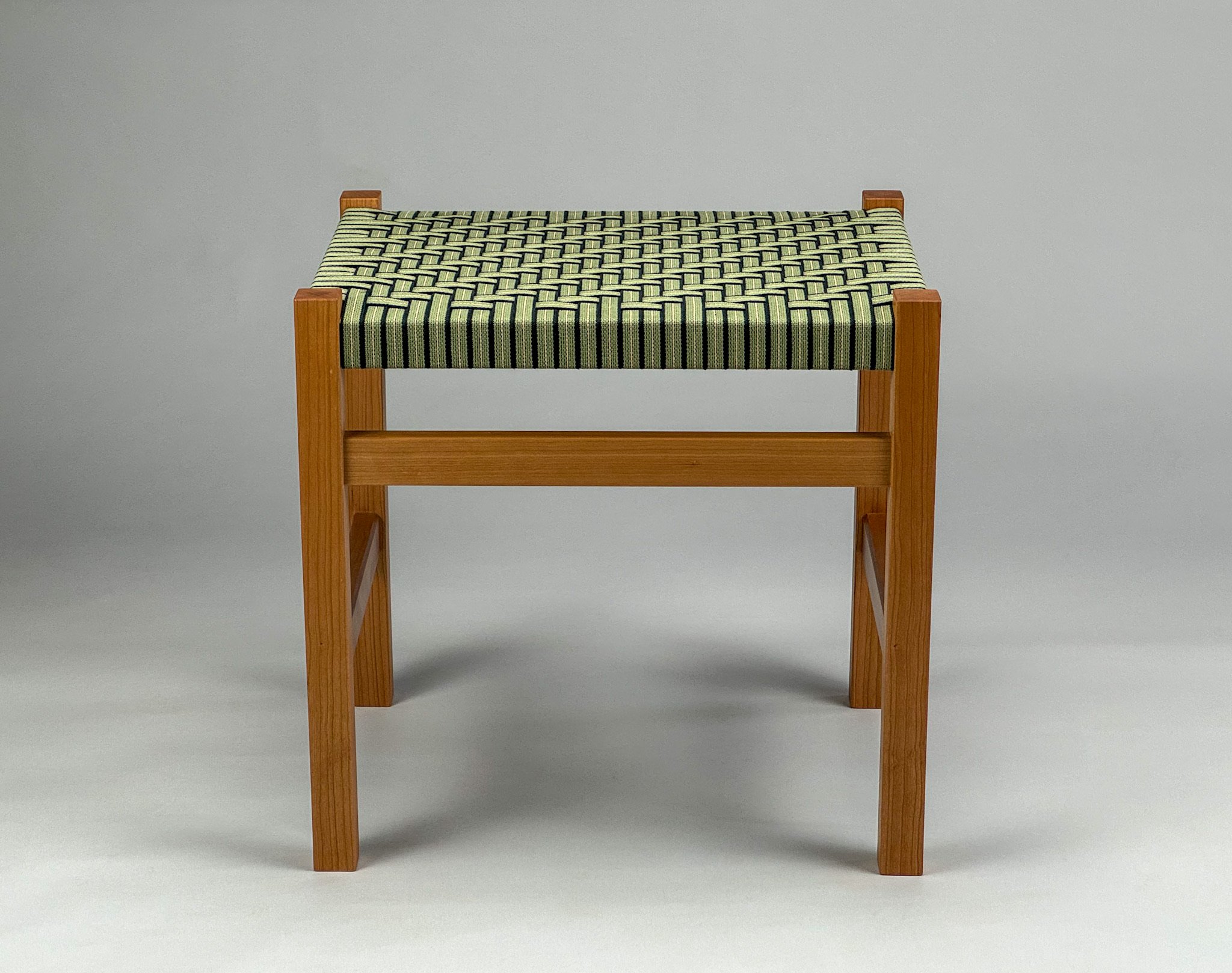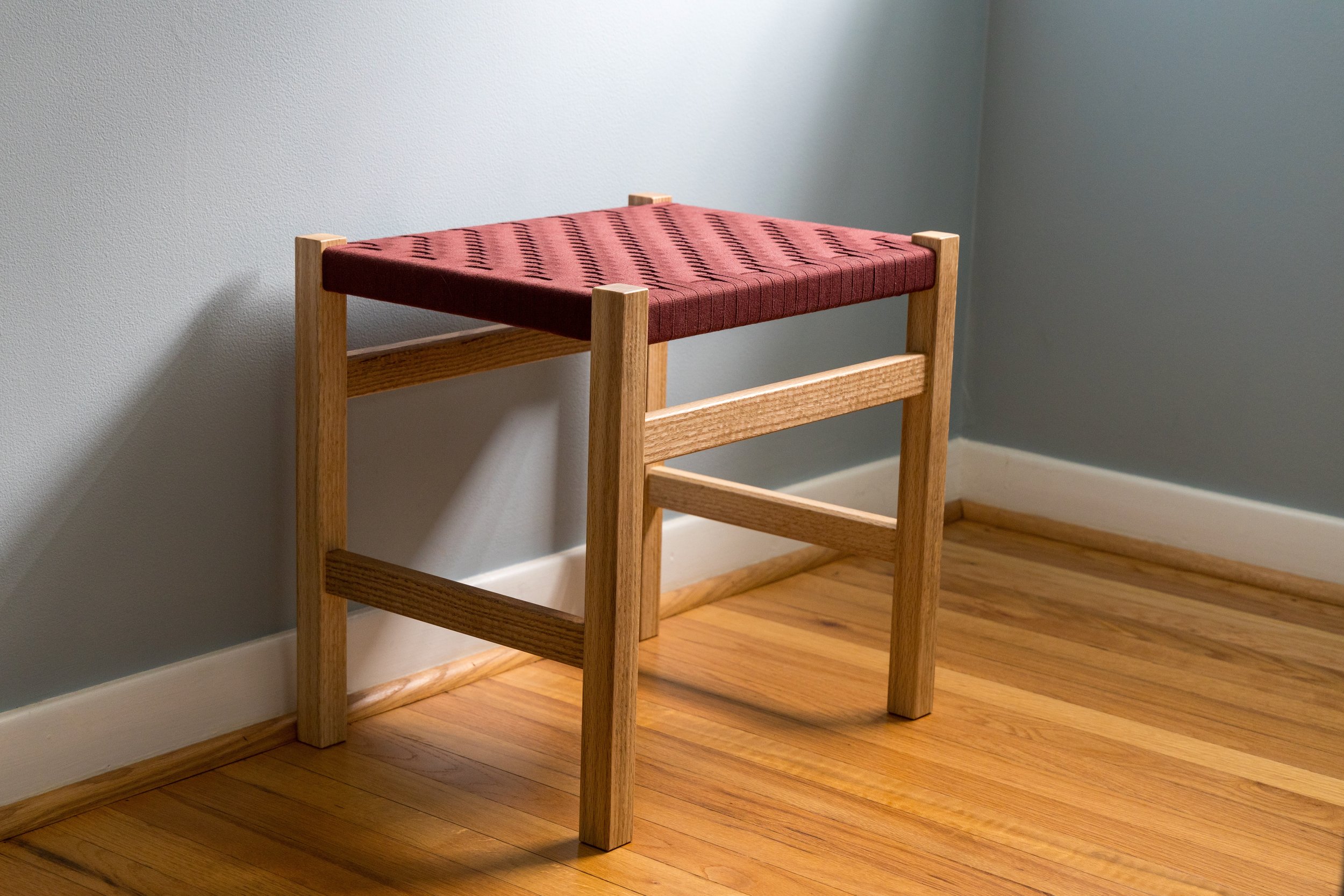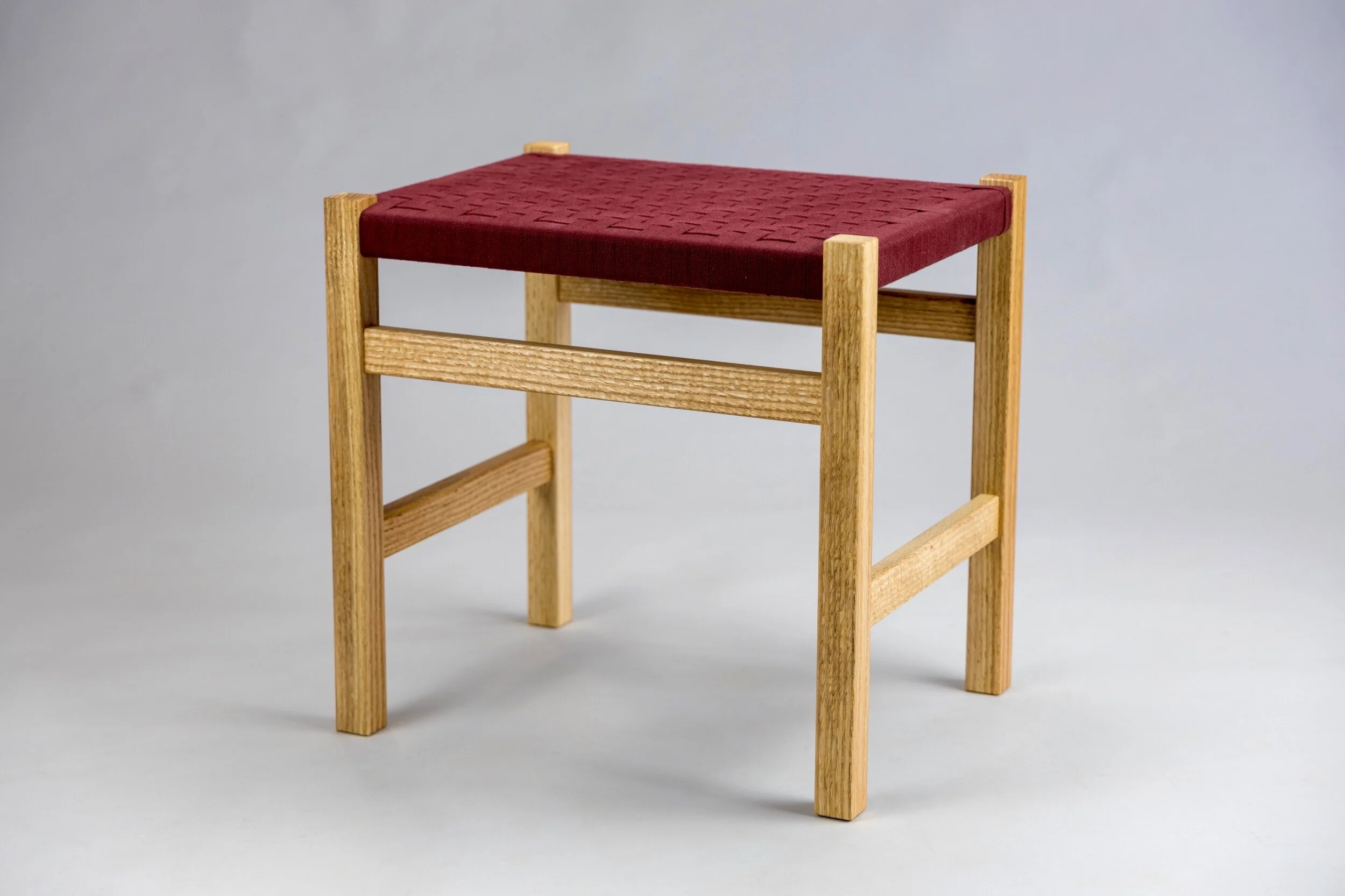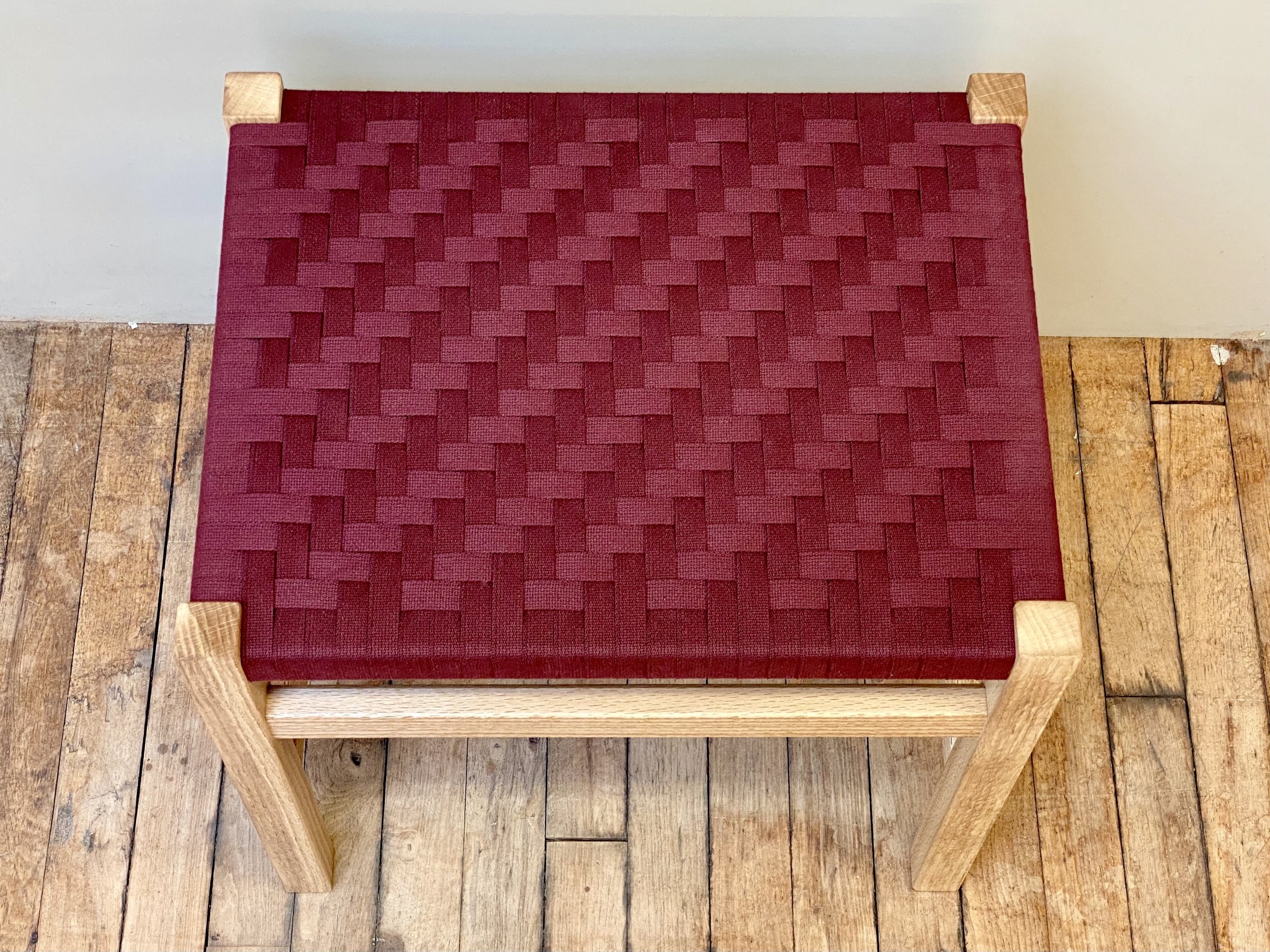Beginner 1 - Stool with Woven Seat





Beginner 1 - Stool with Woven Seat
Instructors - Greg Horton and Craig Stevens
April 14 - May 19, 2025 6pm - 9pm (6 Monday evenings)
Our Beginner Series courses concentrate on woodworking skills that build upon each other and are aimed at developing and retaining good habits and learning more advanced techniques. There will be three courses in the Beginner Series, and each one is project-based and more challenging than the previous course.
The idea for the stool with a woven seat originated with an attempt to make a more modern version of the post and rung stool that was previously offered at PFW. The legs are square and the rails are rectangular, with subtle roundovers and chamfers thoughtfully applied throughout the stool. The cotton webbing, or Shaker tape, is a plain yet attractive material to weave the seat, and the herringbone pattern we use dresses up the seat more than the typically used checkerboard pattern.
The Beginner 1 - Stool with a Woven Seat project introduces students to solid wood construction using mortise and tenon joinery to connect the rails and the legs. We’ll go over in detail proper marking and layout techniques to ensure tight-fitting joints and a well-built stool. The seat is woven with cotton webbing, creating an attractive and strong sitting surface while exposing students to working with textiles in their woodworking. We’ll also demonstrate safe and effective methods for using the table saw and router along with hand tools like chisels and joinery planes that will be used to fine-tune the fit left from the machines. The stool is an excellent beginner woodworking project as well as a beautiful and useful piece for the home.
Students will choose their preferred color cotton tape in the first class, which we’ll then order. The seats will be woven in the last class, so students will go home with a finished project.
The stool measures approximately 18” wide, 14” deep, 17.5” high. The wood used will be red oak or cherry.
The course fee includes all materials
